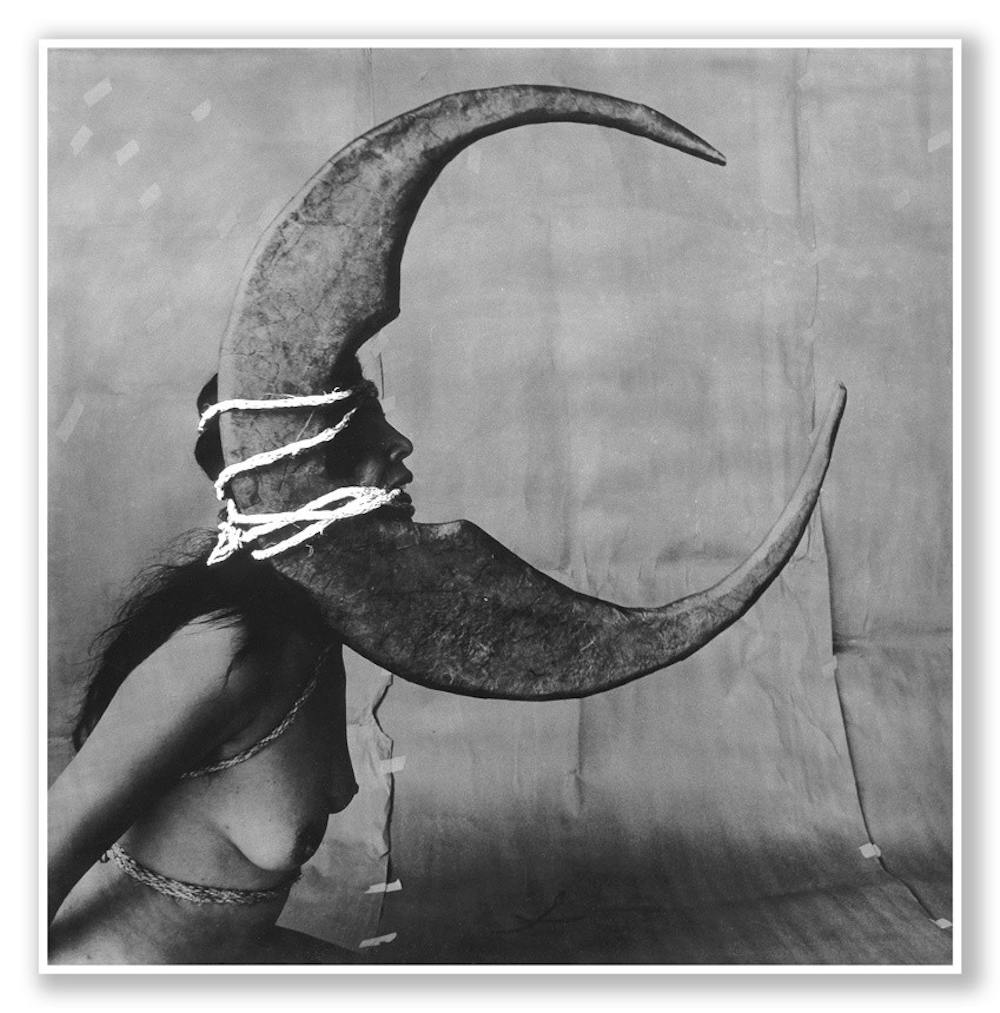Release: March 17 via Northern Silence
Rating: 4/7 stars
In light of its offerings, 2015 has been (Sannhet's Revisionist (The Flenser), Leviathan's Scar Sighted (Profound Lore)) and will be (Bosse-de-Nage's All Fours (4/14 via Profound Lore), Deafheaven's vague third LP) an immense, tears-of-joy-flooded year for American black metal in its countless faces, and Ghost Bath's Moonlover has become one of the pieces vital to the wet memory of this aural year, all at once garnering premature "AOTY" proclamations in the past three weeks. Perhaps the sudden uplift of this album owes to the fact that the media unknowingly propagated the lie that Ghost Bath is a Chinese band playing USBM and Westerners love what they perceive as exotic all the more when it replicates Western culture, perhaps it owes to the moment when everyone learned that the band is actually from North Dakota; either way, the same articles covering Ghost Bath's origin and hoax tend to include affirmations of the brilliant halo of Moonlover, showering it with critical love.
Technically, Ghost Bath masters their genesis with the high-fidelity expected of USBM, playing with the hectic dust of Burzum yet attaining every rhythmic gate. Final track “Death and the Maiden” best demonstrates the marriage of production and skill here, though, judging by the simple composition throughout, the band doesn’t seem to care if people don’t listen to their music because there aren’t enough blast beats or tremolo-picked riffs. What’s to be had here is the modern triumph of dynamics and emotional precision over thoughtless intensity in black metal.
The album is one of gorging sedation -- I write this as the person I’ve split my earbuds with half-sleeps, her posture in accord with the throbbing rain of “Happyhouse,” receiving every glum howl, the jaw beyond relaxed, on every mimesis of a breaking glacier that the instrumentation can produce. Even when the treble comes with eagerness somehow akin to Tom Petty’s “American Girl” in dulcet riffs yearning upwards to an apex on “Golden Number,” the total mass poured into this aesthetic space in anticipation of the depression to follow is palpable and, at times, astonishing.
At the onset the album cover (“La Luna, 1989,” Luis González Palma) and the first oscillating triplets of “The Sleeping Fields” speak a caution that this art has been the torture of the artist and will be the torture of the audience. There are particular moments when the tonal head looks upward with hope rather than mewling supplication as on “Golden Number” and moments of low respite as guitar meanders harmlessly through biological noise on instrumental tracks “Beneath the Shade Tree” and “The Silver Flower pt. 1,” and each of these moments eventually suffers ruin under a shredded throat and an eclipse-filled mind.
The record is a checkered sorrow of black and almost-black, conditions revolving and the heart bending until the theme of “The Sleeping Fields” repeats at the close of “Death and the Maiden.” Of individual peace and depression in the context of eternity, the breaths and the closures on this work, especially those of “Golden Number” and “The Silver Flower pt. 2,” both incredibly textured and lilting phases which nullify every other second of the songs they round off, realize the serene ethic of Moonlover as an album of relinquish and solace.





